The Jan Shrem and Maria Manetti Shrem Museum of Art, designed by SO-IL architects, opened on the UC Davis campus in 2017. For the new museum, the task was to create a visual identity and sign system that reflected the legacy of arts at UC Davis and looked to the future of the museum as a lively student hub. This process began by asking: How can the museum way-finding be easy to use and fulfill the needs & wishes of the museum team? What is the role of exhibition and way-finding design in the modern museum? How can we create a visual identity that both separates the museum from UC Davis, while honoring its ties to the campus?




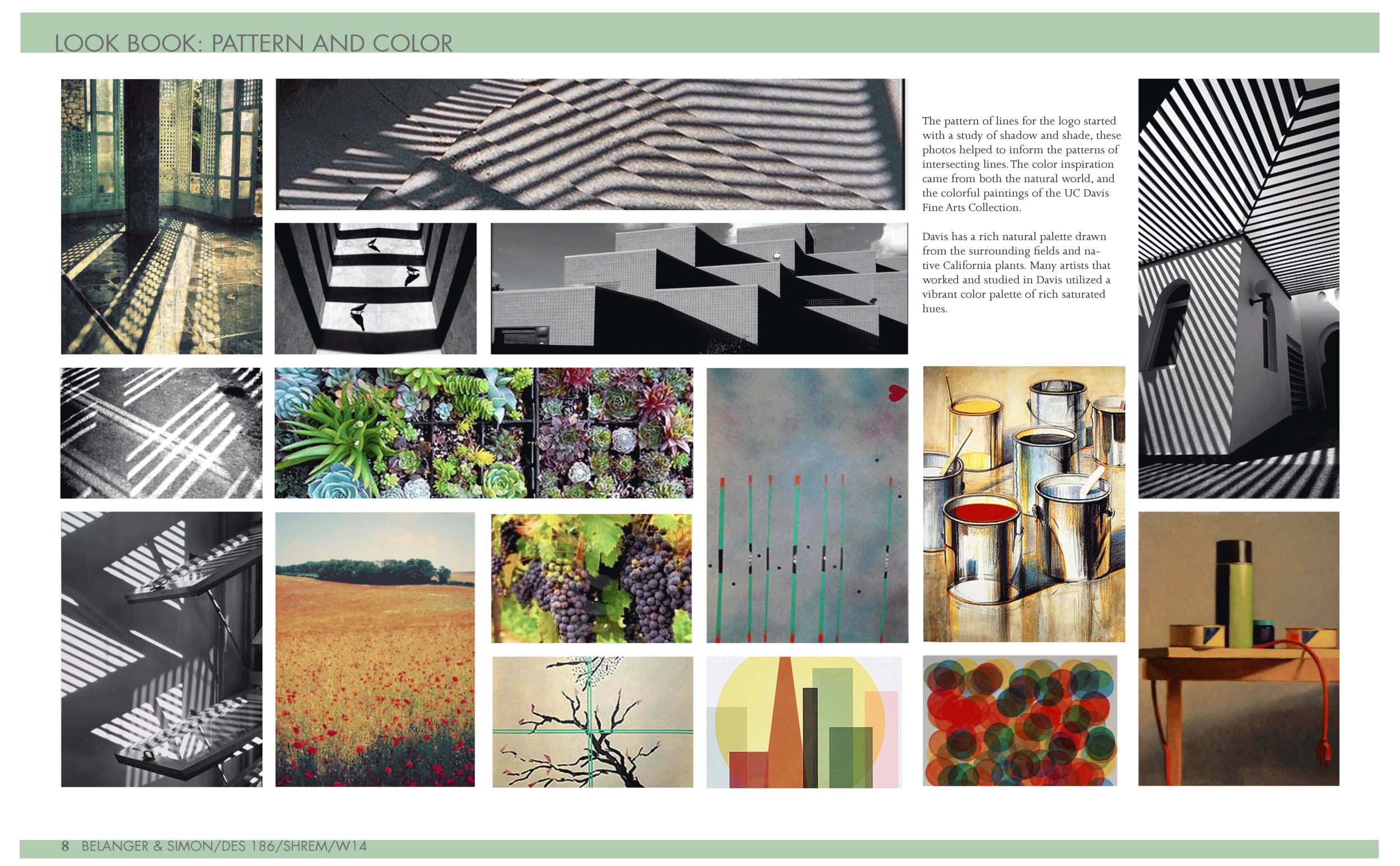
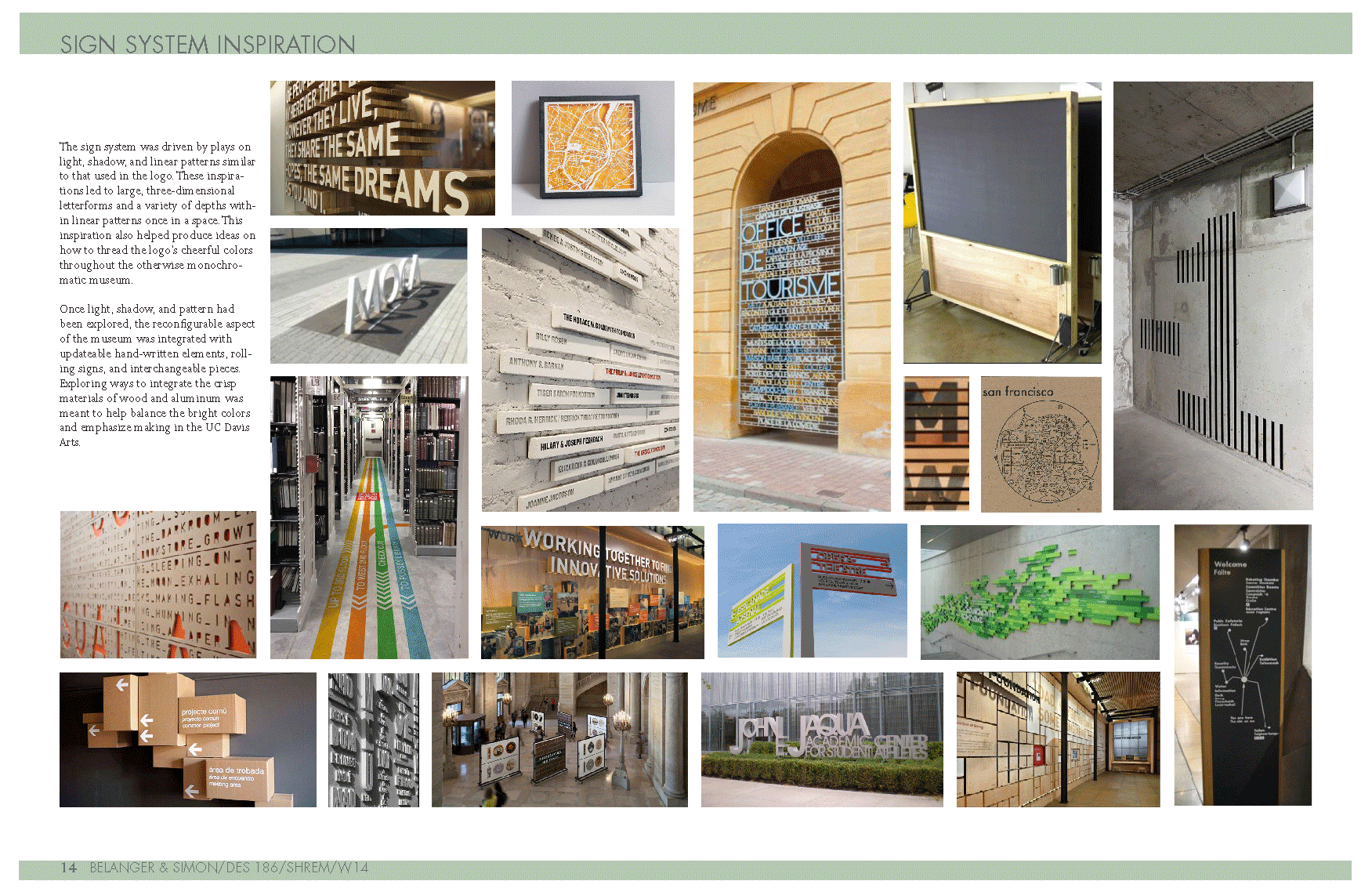
The creation of the visual identity and signage began with in depth research of UC Davis's rich history of studio art and a dive into the permanent collection of the existing museum. It was important to honor the surrounding community of Davis and the architect's vision. While Davis's permanent collection has a large number of important works, what came out most in the research was the impact of artists working on campus, like Wayne Thiebaud, whose paintings are injected with color, rhythm, and pattern. This visual history aligned well with the inspiration the architects had used for the centerpiece of the museum's design, a striated canopy that echoed the linear nature of the surrounding agricultural fields, much like Thiebaud's landscape paintings depict. This interplay of color and pattern became the basis for the visual identity and sign system.
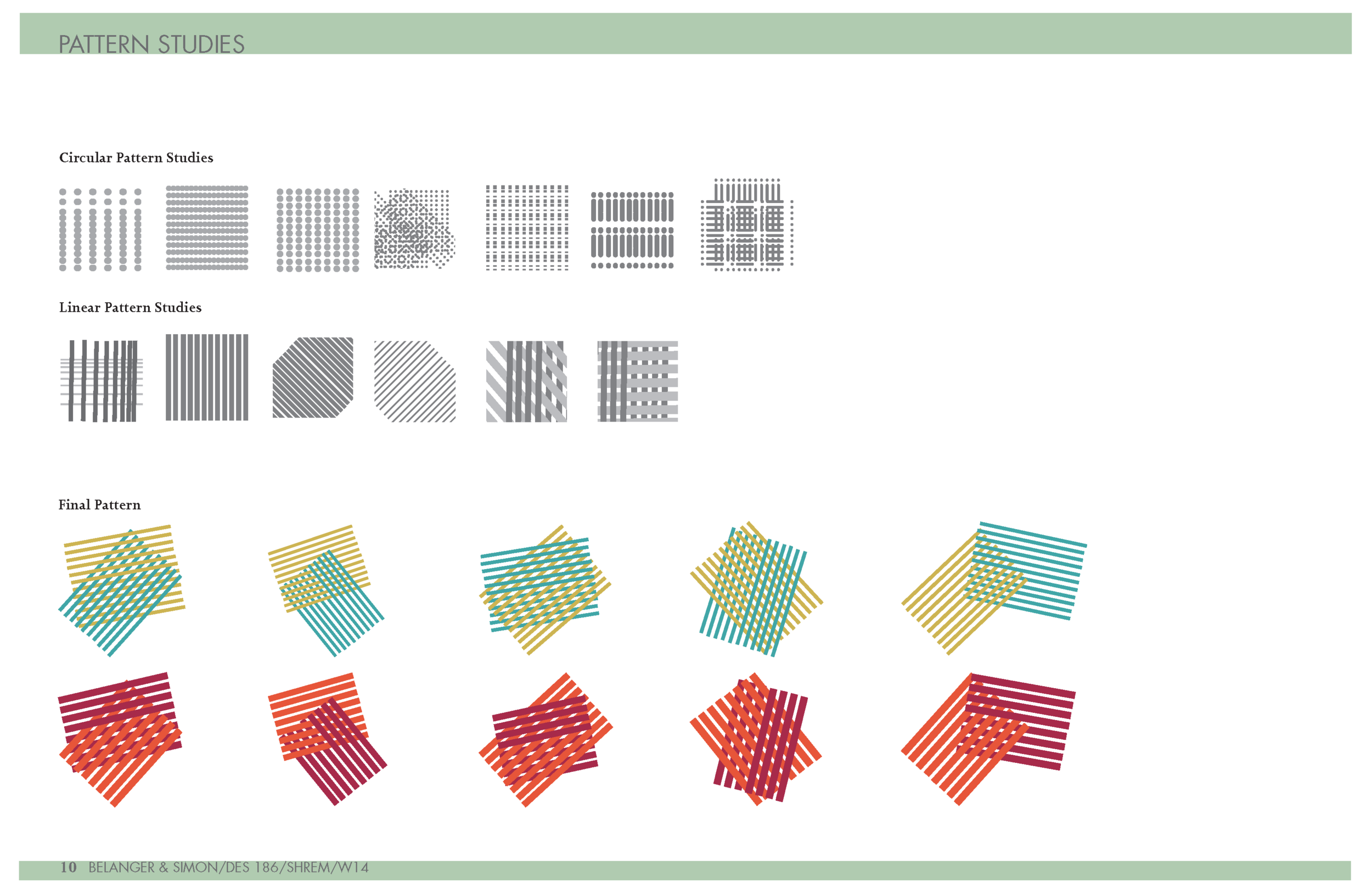
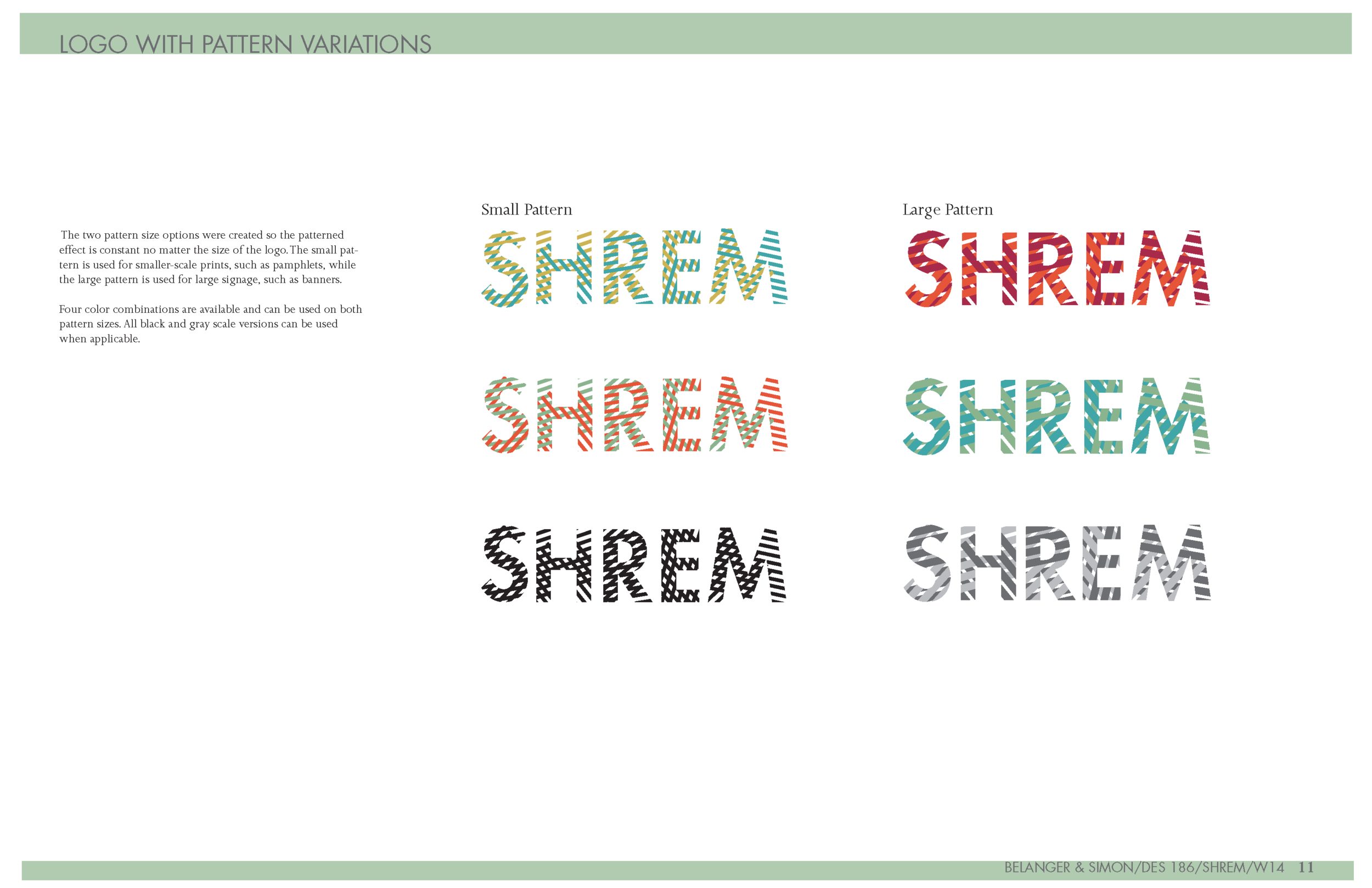



For the visual identity, pattern studies were created in relation to how the proposed canopy would make shadows over the main museum structure. Through feed back, we gathered that a linear overlapping pattern evoked the canopy structure, and was easy to read in color, grayscale, or black & white. By using pattern to create the logo, we were able to infuse the visual identity with color and versatility. This same versatility translated easily to our sign system, which works well with a space that is always changing.







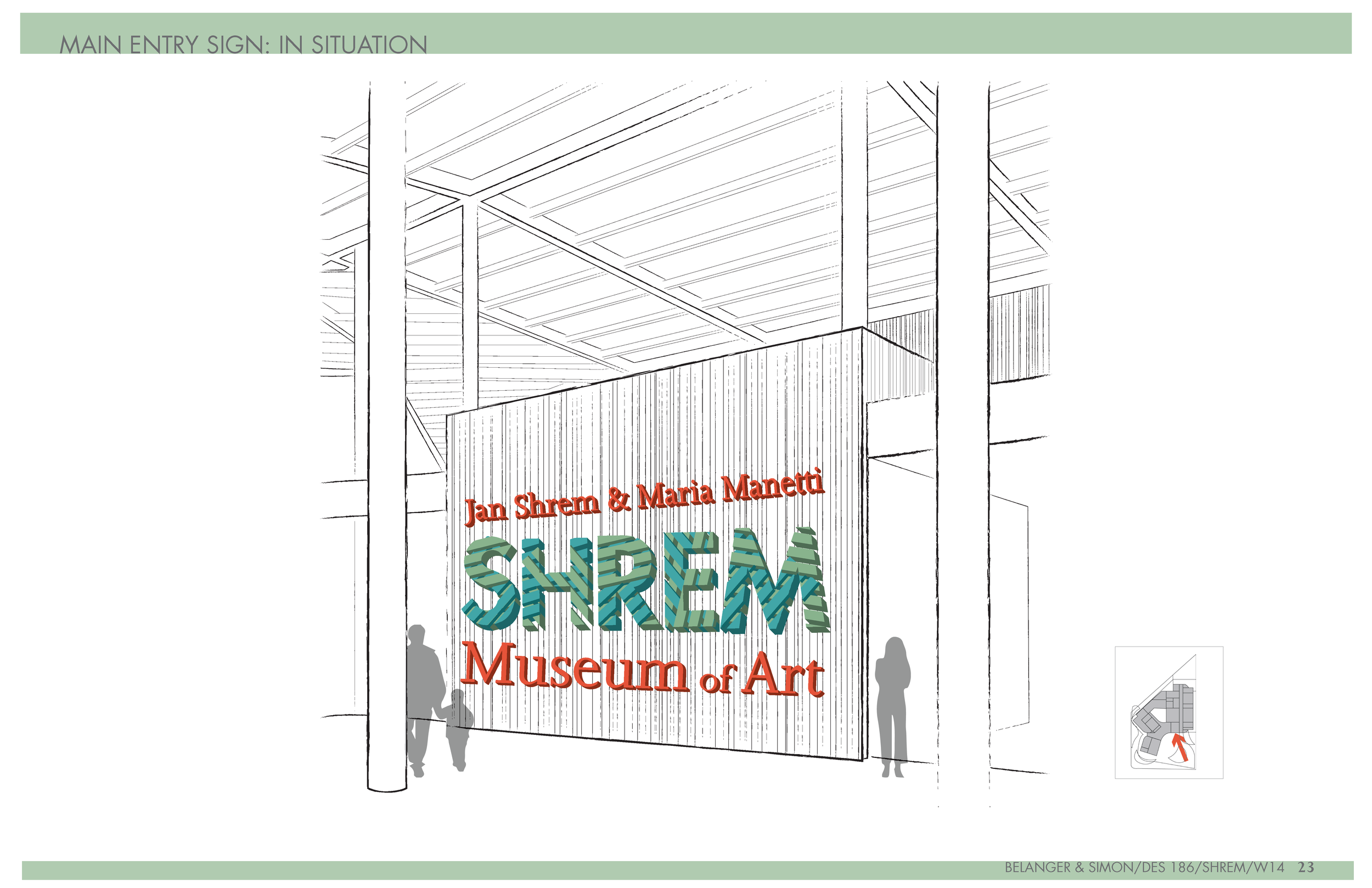
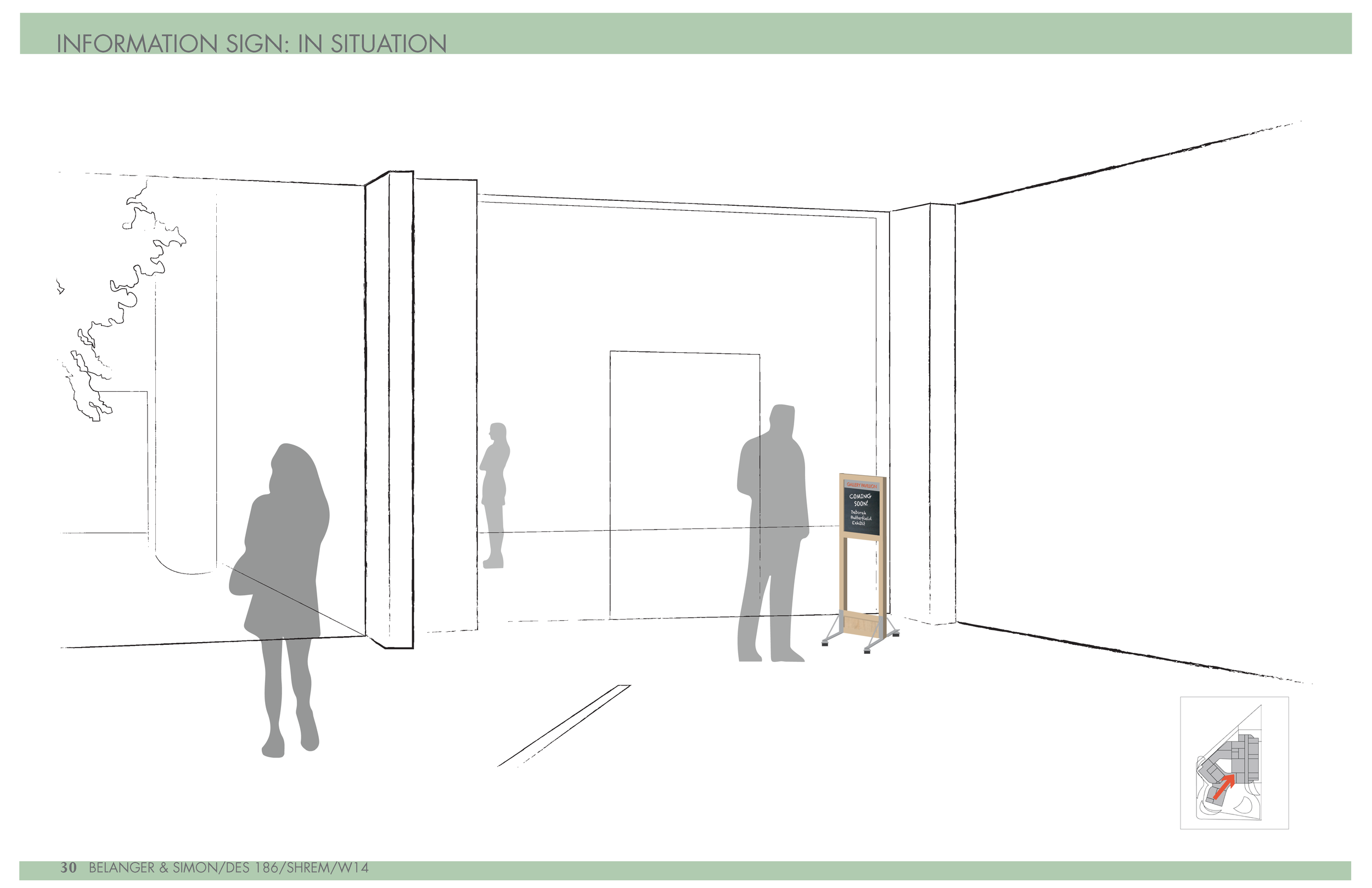
The finished sign system uses exhibition and way-finding design principles to create an easy to understand, versatile system that infused the surrounding monochrome architecture with the spirit of the arts program on the Davis campus. This visual identity was picked out of a class of 20 projects by the Museum Director and her department to be shown in an exhibition about the new museum.